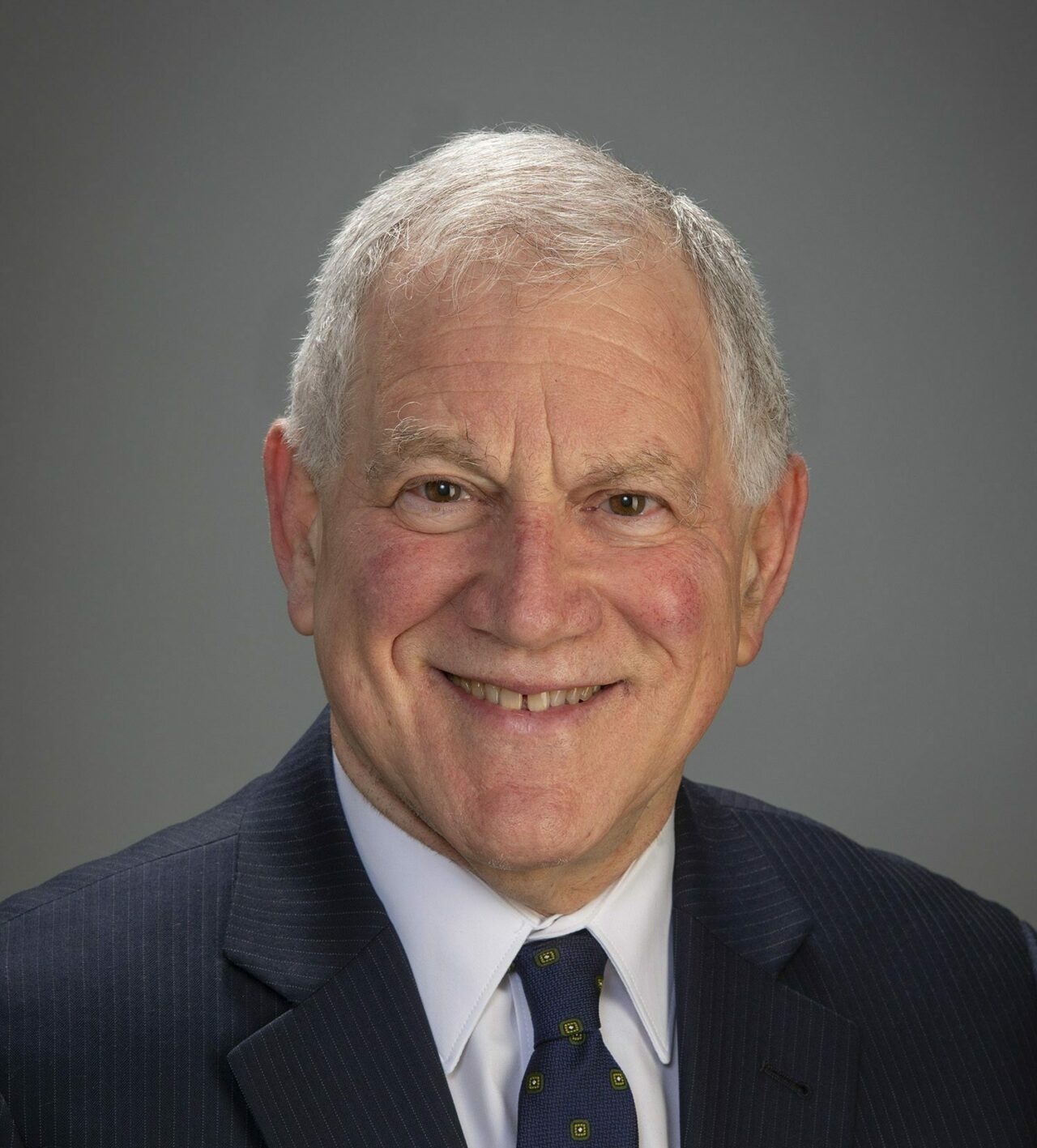Fighting Hate: Addressing a Wave of Antisemitism, Anti-Asian Hate
8.14.2023

Vincent Chang and Brian Cohen, co-chairs of the Task Force on Combating Antisemitism and Anti-Asian Hate
After former President Donald Trump called COVID-19 the “Chinese virus” in a tweet on March 16, 2020, tweets with anti-Asian hashtags rose dramatically in the week that followed. In 2022, the Anti-Defamation League reported the highest number of antisemitic incidents in the U.S. since the organization began tracking them more than 40 years ago: 3,697.
The animosity and hatred directed at Jews and Asians in the United States have propelled President Joe Biden, federal and state legislators and the New York State Bar Association to take action. In May of 2021, Biden signed the COVID-19 Hate Crimes Act into law to get a better handle on the crisis. In the same month, the president established the White House Initiative on Asian Americans, Native Hawaiians and Pacific Islanders to coordinate a federal response to anti-Asian hate crimes and bias.
In May of this year, the president released a National Strategy to Counter Antisemitism to increase awareness and understanding of antisemitism, improve safety and security for Jewish communities and counter hate and discrimination. In July, the New York State Bar Association launched a Task Force on Combating Antisemitism and Anti-Asian Hate to examine the effectiveness of laws in the state and the nation.
Political polarization on social media, the COVID-19 pandemic and the reemergence of anti-Asian and antisemitic falsehoods have spread like a virus, energizing centuries-old hatred against Jews and Asians. And sadly, it is escalating.
“Antisemitic and anti-Asian bias in America is overt and disturbing, and it is increasing exponentially,” said Richard Lewis, president of the New York State Bar Association. “We have launched this task force because we are at a crossroads, and left unchecked, we can only expect that crimes against these two vulnerable groups will continue to spiral out of control.”
It’s important to keep in mind the distinction between hate crimes and hate speech, which can often – though not always – be intertwined. Hate crimes are, first of all, crimes included in the criminal code, such as assault, manslaughter and murder. If it can be shown that these crimes were motivated by hate – such as a verbal rant by the perpetrator – then the offense is treated as a hate crime subject to additional penalties. Hate speech, on the other hand, is constitutionally protected, even though it may be highly offensive.
Finding a balance between allowing free speech and banning hate speech can be difficult. Famously, Nazis were allowed to march in Skokie, Illinois, in 1977, because a ban would have been an infringement on their free speech. While many countries, including Germany, ban symbols tied to hate organizations, the United States does not. Supreme Court Justice Anthony Kennedy wrote in his opinion for Matal v. Tam, “A law that can be directed against speech found offensive to some portion of the public can be turned against minority and dissenting views to the detriment of all. The First Amendment does not entrust that power to the government’s benevolence. Instead, our reliance must be on the substantial safeguards of free and open discussion in a democratic society.”
In Brandenburg v. Ohio, the Supreme Court drew a distinction between advocating for illegal or hateful conduct versus intentionally inciting violence or illegal conduct. The NYSBA Task Force can perform a great service by clarifying the legal boundaries between protected speech and inciteful speech that leads to crimes against targeted groups.
More Hate Crimes, but Still Underreporting
In 2021, 746 anti-Asian hate crimes and 817 antisemitic hate crimes were reported to the FBI by law enforcement agencies. From 2020 to 2021, recorded anti-Asian hate crimes increased by 167%. Antisemitic hate crimes increased by 20%, according to the same data. And while Jews account for 2.4% of the U.S. population, they are the victims of 63% of reported religiously motivated hate crimes. Even these numbers do not paint an accurate picture of hate crimes because the FBI did not receive data from 6,929 of 18,812 law enforcement agencies. Underreporting to law enforcement is an issue too because many victims are hesitant to come forward or fear that police departments will not take them seriously.
Governments and organizations are working both to improve hate crimes reporting and stop the crimes. Many victims do not report because of stigma, shame and difficult relations with local authorities.
The NYSBA task force will examine how hate crimes reporting can be improved by studying law enforcement agencies that have encouraged victims to come forward and kept better track of the crimes. New Jersey, for instance, has a centralized database for reporting bias incidents and a clear list of what state and federal departments should be notified about based on potential threats to the public.
Hate Motivates Two Mass Shootings
Racist stereotypes and prejudice can have deadly consequences. Two recent mass shootings targeted Jews and Asians, and the impact is still being felt.
On Oct. 17, 2018, a man with a gun attacked the Tree of Life synagogue in Pittsburgh, killing 11 people and injuring six. It was the deadliest attack on the Jewish community in the history of the United States.
The shooter yelled “All Jews must die!” during the attack. He had a history of posting racist, white nationalist and antisemitic conspiracy theories on social media. Right before the attack, the shooter posted a message on alt-right social network Gab where he espoused the white nationalists’ great replacement theory, which blames Jews for “allowing” in immigrants and refugees to “replace” white people.
The shooter was charged with 63 federal criminal counts, including hate crimes – 11 for each victim who died and two for an attempt to kill. This June, he was found guilty on all counts. In August, a federal jury sentenced the shooter to death.
A few years after the tragedy in Pittsburgh, and 600 miles south, on March 16, 2021, a gunman killed eight people at three Atlanta-area spas, six of them Asian women. According to Korean newspaper Chosun Ilbo, a witness heard the shooter say, “I’m going to kill all Asians.”
According to police, the shooter said he targeted the spas to “eliminate temptation” for his so-called “sex addiction,” which was at odds with his evangelical faith. He was acting on stereotypes of Asian women as being submissive and readily available for sex. Asian women are overwhelmingly the victims of anti-Asian hate due to the intersection of sexism and racism, according to the National Asian Pacific American Women’s Forum. Class and immigration status play a role as well because Asian women are more likely to work in low-wage, public-facing jobs, making them more vulnerable to harassment.
According to Stop AAPI Hate, women reported 60% of anti-Asian hate incidents, while men reported 30% of incidents (7% did not report their gender and 3% are nonbinary).
The shooter was charged with four murders in Cherokee County and four murders in Fulton County. He was found guilty of the killings in Cherokee County and sentenced to life in prison. In Fulton County, District Attorney Fani Willis is seeking the death penalty. Cherokee County prosecutors chose not to argue that the shooter was motivated by bias, while Fulton County is seeking a harsher sentence with a hate crime charge.
Increasing Reports of Hate Incidents and Bias
Both antisemitism and anti-Asian hate have a long history in the United States.
Starting in 1882, the Chinese Exclusion Act banned immigrants from China. During World War II, 125,000 Japanese Americans were forcibly relocated to internment camps. In 1982, Chinese American Vincent Chin was beaten to death by two white men who blamed him for the loss of American auto industry jobs to Japan. The perception of Asian Americans bounces between the “yellow peril” threat and the quiet, compliant “model minority.”
But expressions of anti-Asian hate really took off during the pandemic.
The Pew Research Center reported in July 2020 that 31% of Asian adults said they had been subject to slurs or jokes about their race or ethnicity since the COVID-19 pandemic started. This rhetoric escalated to attacks against Asian Americans in cities across the country. In response, the Stop AAPI Hate reporting center was launched on March 19, 2020. In the first week, the center received over 600 reports of hate incidents from across the country. Within one month, that number had jumped to 1,500. As of March 31, 2022, the number reached 11,467 incidents. According to Stop AAPI Hate, “the majority of hate incidents are non-criminal behaviors that contribute to an unwelcoming environment, such as spitting or the use of racial slurs.”
A disturbing number of anti-Asian incidents have happened in New York City. In the first months of 2022, Michelle Go was shoved to her death in front of a moving subway train in Times Square. Christina Yuna Lee was followed and stabbed to death inside her Chinatown apartment. GuiYing Ma was smashed with a rock while sweeping the street near her home in Queens and later died of her injuries.
According to the Asian American Bar Association of New York, there were 91 arrests out of 233 anti-Asian incidents in 2021 in New York City. By the time its report was published last year, there were seven convictions for hate crimes, while 20 cases were still pending.
Jews have been in the U.S. since colonial times, and sadly, so has antisemitism. Henry Ford notoriously published antisemitic articles in his newspaper, The Dearborn Independent, throughout the 1920s. Adolf Hitler even called Ford “my inspiration” and kept a portrait of him next to his desk. In the years leading up to World War II, 20,000 American Nazis held a rally at Madison Square Garden, and a Nazi summer camp operated on Long Island.
According to the ADL, antisemitic incidents increased in the middle of the last decade. In 2015, there were 942 incidents, but the number jumped to 1,267 in 2016 and 1,986 in 2017. The Unite the Right Rally in Charlottesville, Virginia, in which white supremacists shouted, “Jews will not replace us,” took place in 2017.
Antisemitic incidents also spike during times of conflict between Israel and Hamas. The ADL recorded 387 incidents during the last crisis in May 2021, which was at the time the highest number of antisemitic incidents recorded in one month.
A common antisemitic tactic is blaming Jewish people for Israeli politics. In fact, the International Holocaust Remembrance Alliance’s working definition of antisemitism includes accusing Jews of being more loyal to Israel and holding Jews collectively responsible for the actions of the state of Israel.
Scott Richman, the ADL regional director for New York and New Jersey, said there is a distinction between criticizing Israeli politics and leaning into antisemitism. “While there’s nothing wrong with criticizing Israel, claiming it is not a legitimate nation, holding it to double standards not placed on any other country and over-the-top demonization can cross the line from legitimate criticism to antisemitism,” he said.
The NYSBA task force will look closely at how antisemitism related to Israel plays out on colleges and universities, which are often the center of such incidents.
Public figures have also been involved in spreading antisemitism. Since last year, the celebrity Kanye West, also known as Ye, has made several antisemitic statements on social media and in interviews. He lost several sponsorships, including Adidas, but white nationalists have embraced him as one of their own. According to the ADL, 59 antisemitic incidents from October 2022 to the end of the year referenced Kanye West. In July, presidential candidate Robert F. Kennedy, Jr., remarked that the coronavirus was targeted to spare Chinese and Jewish people. Meanwhile, actor Jamie Foxx recently created a controversy with a cryptic Instagram post that referred to those who “killed the dude named (d) Jesus.” Both incidents were widely interpreted as antisemitic and the Kennedy statement was seen as anti-Asian as well.
One of the most-subscribed YouTube personalities, Felix Kjellberg – better known as PewDiePie – paid two people to hold a sign that read “Death to all Jews” for a video in 2017. Kjellberg later said in 2019 that he would donate $50,000 to the ADL but withdrew after an outcry from his fans.
“Social media has been a big contributor to the spread of hate in the past decade,” said Richman. “Before the internet, a person with hateful views who wanted to spread their message would have a hard time finding a sympathetic mass media platform. Now, social media allows that same person to spread hate speech, find others who share their views and radicalize others into their views.”
While most social media platforms officially ban hate speech, it is still pervasive, because the platforms are largely self-regulated. Under Section 230 of Title 47 of the United States Code, social media companies are not liable for what their users post. The provision was enacted as part of the Telecommunications Act of 1996, long before the internet as we know it – let alone social media – came to be.
In May, New York State Sen. Brad Hoylman-Sigal and Assembly Member Grace Lee called for passage of a bill that would require large social media companies to be more public about how they police their content. The bill also calls for platforms to submit yearly reports to the attorney general detailing how much hate was posted, and the actions taken to remove and moderate hate speech. The task force will consider the effectiveness of this legislation and other efforts to stop hate speech on social media.
California passed similar legislation in September 2022, and the first reports will be due in 2024. Lawsuits have already been filed challenging the constitutionality of the law on free speech grounds.
Actions To Fight Hate
In New York State, Gov. Kathy Hochul signed legislation last November that requires people convicted of hate crimes to go through training and education in hate crime prevention. On that same day, she established a campaign run by the Division of Human Rights to promote acceptance, tolerance and inclusion of the state’s diverse population.
In July, the governor announced $51 million in security grant funding to fight hate crimes targeting cultural centers, museums and houses of worship. She also signed legislation to strengthen investigation and reporting requirements for hate crime incidents occurring on college campuses.
There is more that can be done, however. It is still difficult to prove bias in hate crimes against Asians because there is no universally recognized symbol of anti-Asian hate, such as a swastika in the case of crimes against Jews.
The New York State Bar Association’s Task Force on Combating Antisemitism and Anti-Asian Hate will examine hate crimes laws and how they are used by law and enforcement and prosecutors. The task force will also look at proposed hate crimes legislation and make recommendations.
Proposed federal legislation lowers the statutory burden of proof for showing intent with respect to a federal hate crime offense. Current law holds a “because of” standard, which requires proof that a person’s actual or perceived characteristic was a sole motivating factor in an attack. The proposed bill would change the standard from the sole motivating factor to a contributory motivating factor.
On the state level, a proposed bill would create presumptions that make it easier to prove hate crimes, in part by including if an attacker has an established history of prejudice or made biased or derogatory statements prior to the crime.
One recommendation is to revise Penal Law Section 485.05, which was last codified in the Hate Crimes Act of 2000. Currently, the law says that a person committing a hate crime selects their victim “in whole or in substantial part” because of their background. A proposal to remove the word “substantial” would put the statute in line with federal law and ease the burden of proof and make police and prosecutors more likely to charge biased offenses as hate crimes.
Another proposed revision is expanding all offenses, if motivated by bias, to count as hate crimes. The current law provides a lengthy list, but it leaves out certain offenses like graffiti, criminal obstruction of breathing and rape in the third degree.
Finally, current law only provides “negative guidance” by defining what is not a hate crime. Changing the law to include more examples of what constitutes a hate crime, including the actions of a defendant before and during an attack, would encourage investigators to look more deeply at the motivation behind a criminal act.
Another goal of the task force is to examine how to stop hate before it begins through education, especially in schools. While anti-bias, anti-bullying and diversity programing has been shown to be effective, it is not consistent in schools throughout the state.
“The New York State Bar Association’s task force will look for strategies to stop the hate and find justice for those affected by such heinous acts,” said NYSBA President Lewis. “Hate does not belong in our communities.”
Rebecca Melnitsky is a content and communications specialist at NYSBA.






